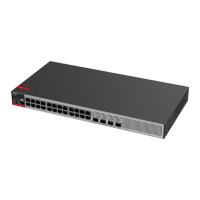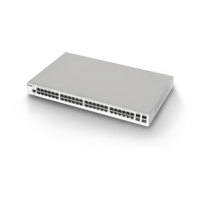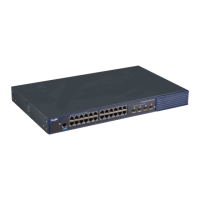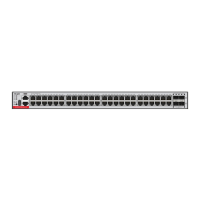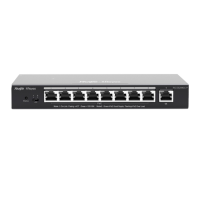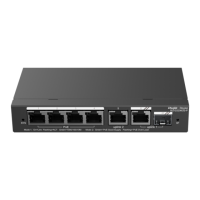CLI ReferenceInterface Configuration Commands MSTP Configuration Commands
spanning-tree mst port-priority
This command is used to configure the interface priority for different instances of an interface in
the interface configuration mode. It will determine which interface of a loop in a region is in
charge of forwarding. You can use the no option of the command to restore the default setting.
spanning-tree [mst instance-id] port-priority priority
no spanning-tree [mst instance-id] port-priority
Instance ID in the range of 0 to 64
Interface priority, for which sixteen integers are available:
0, 16, 32, 48, 64, 80, 96, 112, 128, 144, 160, 176, 192,
208, 224, and 240, which are the multiples of 16.
The default instance-id is 0.
The default priority is 128.
Interface configuration mode
When a loop occurs in the region, the interface of a higher priority will be in charge of
forwarding. If all interfaces have the same priority, the interface with a smaller number will be
in charge of the forwarding.
This example shows how to set the priority of gigabitethernet 1/1 to 10 in instance 20:
Ruijie(config)# interface gigabitethernet 1/1
Ruijie(config-if)# spanning-tree mst 20 port-priority 0
You can verify your settings by entering the privileged command ―show spanning-tree mst
instance-id ‖
Show the MSTP information of an interface.
spanning-tree mst priority
Set the device priority for different instances.
spanning-tree mst priority
This command is used to set the device priority for different instances in the global
configuration mode. You can use the no option of the command to restore the default setting.
spanning-tree [ mst instance-id ] priority priority

